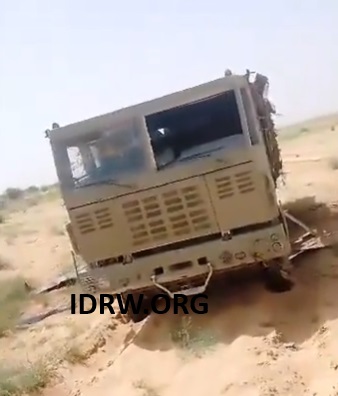SOURCE: AFI

Recently, a Pantsir-S1 air defence system decoy was reportedly abandoned by Wagner Group forces somewhere in the Malian desert. While this event itself drew international attention, what particularly caught the eye of many Indian defense enthusiasts was the striking resemblance of the truck chassis used in the decoy to the TATA 6×6 Heavy Mobility Vehicle (HMV), an Indian-built platform. This raised curiosity about possible connections between Tata Motors and Russian air defense systems, and a closer look reveals a history of collaboration between the two.
The connection between Tata Motors and Russian air defense technology is not new. In October-November 2013, at the Kapustin Yar range of the Russian Ministry of Defense, a variant of the Tor-M2KM Surface-to-Air Missile (SAM) system was tested on the chassis of a Tata Motors 6×6 vehicle. These tests were designed to assess the platform’s performance under Russian military standards, and the results were impressive. The Tor-M2KM, mounted on the Tata vehicle, successfully demonstrated its ability to engage air targets at a range of 15 km and handle fast-moving targets flying at speeds of 700 m/s. It also showcased its capability to neutralize targets with a heading parameter greater than 6 km at distances of up to 12 km.
The recent discovery of the Pantsir-S1 decoy in Mali, mounted on what appears to be a Tata-built 6×6 HMV, raises speculation about how such a vehicle ended up in use by Wagner Group forces in the region. The Wagner Group, a Russian paramilitary organization, has been active in several African nations, including Mali, and is known for operating a range of Russian military equipment. However, the origin of the Tata-like vehicle in this case is unclear, especially given the ongoing conflict in Ukraine and international sanctions on Russian arms sales.
One theory suggests that the sale of Tata 6×6 HMVs to Russia or its partners could have taken place before the Ukraine war, during a period when Russia sought to diversify its military platforms. The platform’s robust design and ability to handle heavy military systems like the Pantsir-S1 air defense system may have made it an attractive choice for various military and paramilitary forces operating in remote and harsh environments, such as the Malian desert.
However, the use of Tata-built vehicles in Russia’s current military operations or by associated paramilitary groups like Wagner, if confirmed, could raise eyebrows, especially in the context of the ongoing war in Ukraine. Any involvement of Indian technology or platforms in controversial geopolitical conflicts would come under scrutiny.
The discovery of a Pantsir-S1 decoy on a truck resembling a Tata 6×6 HMV in Mali opens up a series of intriguing questions about the history and scope of Indo-Russian defense collaboration. While it is highly likely that such vehicles were sold to Russia or its allies in the past, prior to the outbreak of the Ukraine conflict, it is unclear how these platforms ended up in the hands of the Wagner Group in Mali.